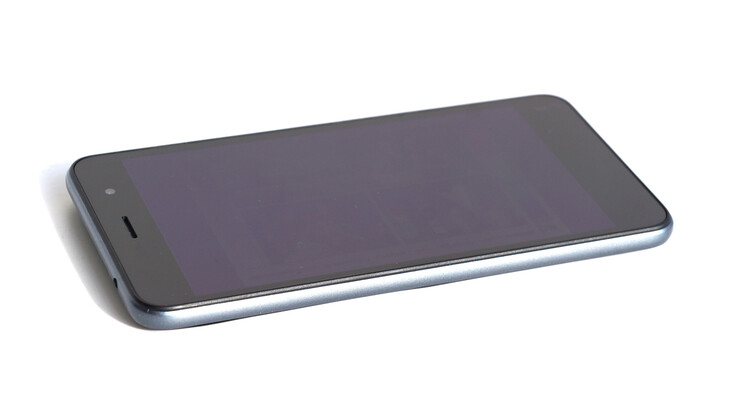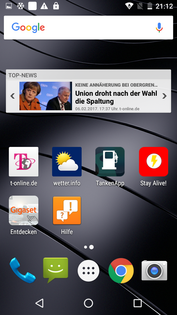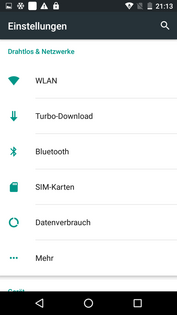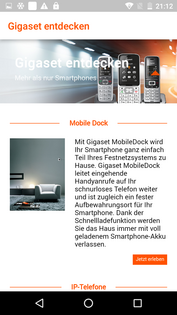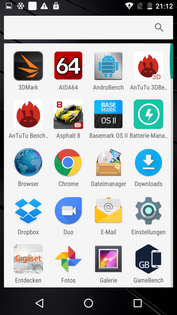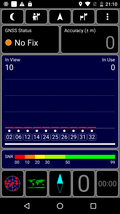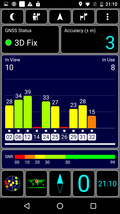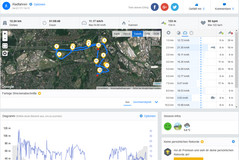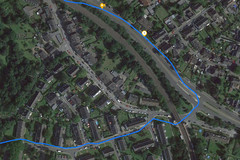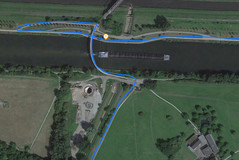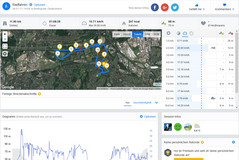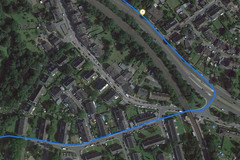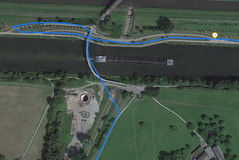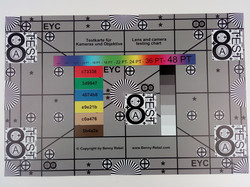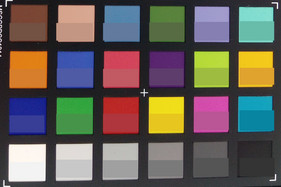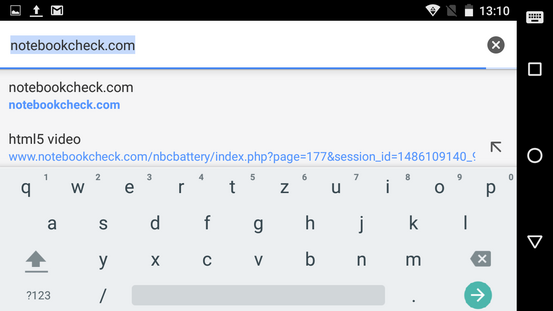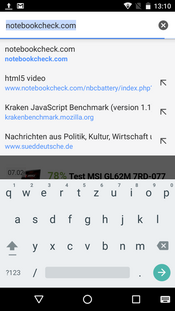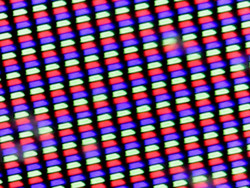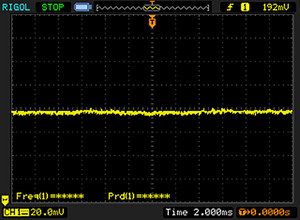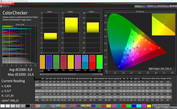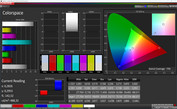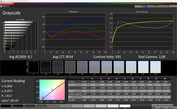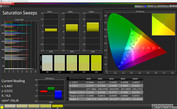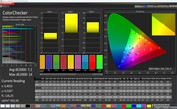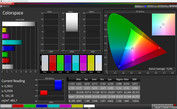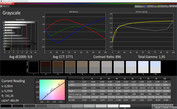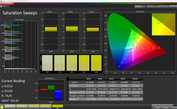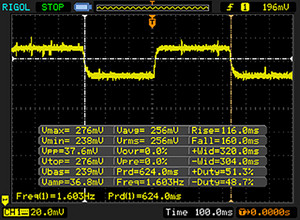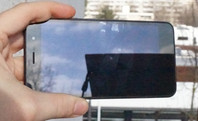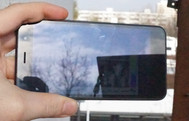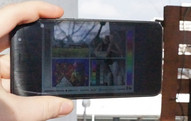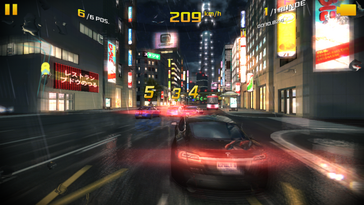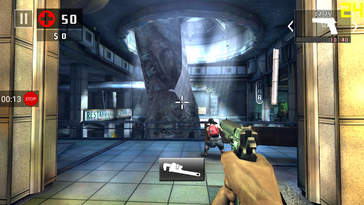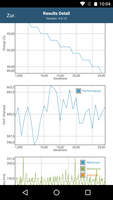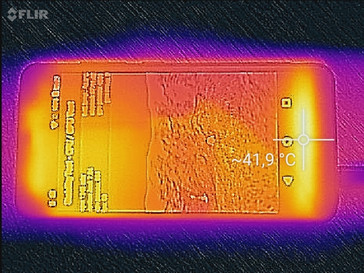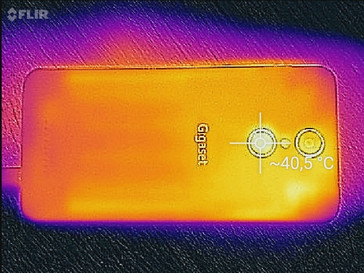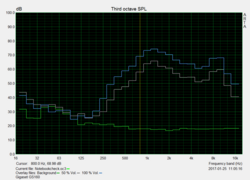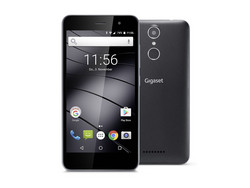Gigaset GS160 Smartphone Review
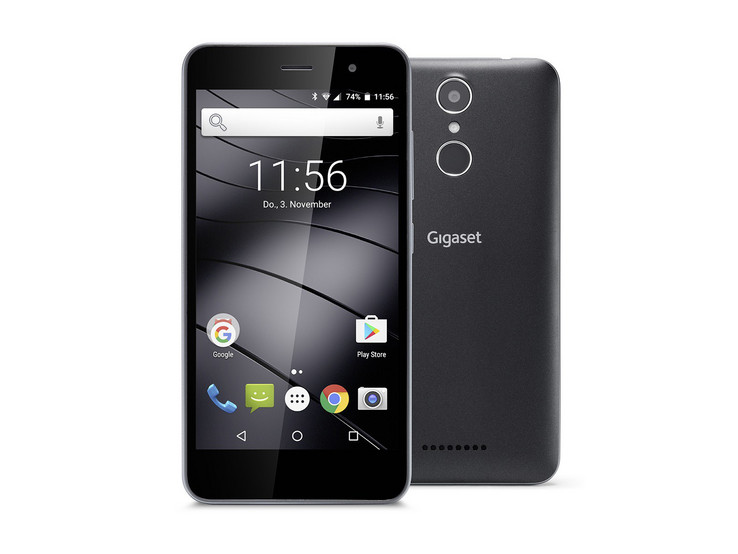
For the original German review, see here.
Gigaset attempts a comeback: Until now, the manufacturer's smartphones were built under license. However, Gigaset is now developing its own devices, even though they are still manufactured in the Far East. The previous smartphones by Gigaset were situated in the mid-range and convinced just with their design. Apart from minor flaws, the handsets were also quite recommendable otherwise. Gigaset expands its portfolio downward with the GS 160 and launches an entry-level smartphone for just under 150 Euros (~$160) on the market. The rear-sided fingerprint scanner that is quite unusual for this price range catches the eye at a first glance. Nevertheless, the GS160 offers other category-typical advantages, such as a removable battery, dual-SIM, and an expandable storage. We closely examine the smartphone in this in-depth test.
Identically priced and sized devices from the competition will be used for the comparison: Both Lenovo's C2 and Lenovo's Moto G4 Play convince as balanced total packages. Huawei's Y6 II Compact with a small performance advantage and the colorful Wiko's Lenny 3 are also included in the comparison.
Case
Unfortunately, Gigaset's GS160 does not feature the high-quality materials of Gigaset's ME or ME Pro. However, the device costs only a third of Gigaset's ME. The rear is made of plastic that at least offers a light glitter effect. The handset is available only in black with a dark-gray bezel.
The back yields under pressure, particularly in the center. Pressure on the screen immediately causes wave formation in the liquid crystals. The device can be warped quite significantly, which is accompanied by very audible cracking noises. The GS160 does not make a particularly high-quality impression with this. At least the smartphone should withstand drops from up to 1.4 meters (~4.6 ft) as Gigaset uses the same test criteria for its smartphones as for its DECT phones.
The back cover can be removed and the battery can be exchanged. In terms of weight and dimensions, the GS160 is on category average.
Connectivity
Gigaset's GS160 is not badly equipped with 16 GB of storage. Some devices from this price range have just 8 GB of storage. However, the RAM of 1 GB is rather low since 2 GB is actually standard now. The smartphone cannot serve with many interfaces: It does not have NFC, the USB port supports only USB 2.0 speeds, and the older Bluetooth 4.0 standard is used. This is not unusual in this price range, which is also the case with dual-SIM support. Fortunately, the microSD slot is dedicated, making it possible to insert two SIM cards plus a microSD card. MicroSD cards can be formatted and used as internal memory, but apps cannot be moved to the external storage media.
Software
The Android 6.0 runs on Gigaset's GS160, but the security patches are dated early October 2016 and are thus quite outdated. A newer version of the operating system was not available at the time of testing, and this will probably not change: Gigaset's GS160 is a very low-cost smartphone and therefore, it is not easy for the manufacturer to budget for software updates.
Looking at the preloaded apps, it seems that Gigaset has cooperated with Ströer Digital. The company now belongs to the Internet portal T-Online. Consequently, the T-Online app as well as some other apps from this company, such as the cheapest gas station and weather, have been installed. A help function that can be quite useful and a file manager are also preloaded.
The storage is encrypted by default, and thus the PIN has to be entered for unlocking prior to start.
Communication and GPS
LTE has become standard even in low-cost smartphones; only the frequencies and the speeds are usually more limited than in more expensive devices. This is also the case in Gigaset's GS160: The smartphone offers just two UMTS bands, but at least four GSM and LTE frequencies. The maximum download speed is 150 MBit per second and 50 MBit per second in upload. Gigaset has made cutbacks in the UMTS bands; the user will not get far in foreign countries. Perhaps it was considered that the mobile network providers would like to see the UMTS network shut down as soon as possible. The reception quality in the German Vodafone network was quite good in an urban area; we usually had a full to almost full signal indoors.
The user has to be satisfied with the Wi-Fi 802.11 b/g/n standards. Thus, communicating in the 5 GHz network is not possible, and the high-speed 801.11ac standard is absent, which is normal in this price range. The transmission speeds in our standardized Wi-Fi test were satisfactory, but receiving data was much slower than in comparable devices. We noticed that we had to wait a bit for pages to load, even within the immediate vicinity of the router. The reception quality fluctuated between 3/4 and 1/2 at a distance of 10 meters (~33 ft) and through three walls. However, loading times were quite similar.
| Networking | |
| iperf3 transmit AX12 | |
| Lenovo C2 | |
| Gigaset GS160 | |
| Alcatel Shine Lite | |
| iperf3 receive AX12 | |
| Lenovo C2 | |
| Alcatel Shine Lite | |
| Gigaset GS160 | |
The GPS module could not locate us indoors. On the other hand, it was quite fast and the achieved maximum accuracy of 3 meters (~10 ft) in the GPS Test in the outdoors. We take both the review sample and Garmin's Edge 500 professional navigation system on a ride with our mountain bike to check whether Gigaset's GS160 is suitable as a tracker.
The Runtastic screenshots show that the GS160 logged an approximately 350 meters (~383 yd) shorter route. This can be acceptable in view of an overall distance of 12 Kilometers (~7.5 mi). It is quite obvious that the GS160 sets considerably fewer measuring points than the professional navigation system, and that it often draws a straight line over longer distances, even if they run through rivers or houses on the map. This is perfectly acceptable when using the smartphone for occasional navigation. However, a dedicated device or at least a very high-quality smartphone is the better choice if exact tracking is required.
Telephone and Call Quality
The unmodified Android app is used as the phone app. This is not a bad choice as it offers many functions and is clearly arranged.
Gigaset describes the call quality as "outstanding", but we would not go that far. Actually, the opposite is true: the earpiece hums slightly and voices sound quite treble-heavy. The microphone records quiet voices with interruptions and we also sound very far away. A cracking noise is also heard in the speaker during a call. Although Gigaset's GS160 allows making reasonably intelligible calls, it is not very enjoyable.
Cameras
A 13-megapixel primary camera and 5-megapixel front camera are decent in the entry-level category. The primary camera features an auto-focus and LED flash, but the image quality is quite obviously situated in the entry-level sector: The auto-focus does not always function properly and the photos do not have to be zoomed in order to see that they are not as sharp as photos from higher-quality smartphone cameras. Details often look artificial. Large color areas tend to pixelate quickly. The low-light performance is not at all bad: Although a visible color noise can be seen, we like the sharpness. Videos can be recorded in 720p. The auto-focus also has problems every now and then here, and the exposure sometimes needs quite a while to respond to changed light conditions. Otherwise, the sharpness and color reproduction are quite satisfactory. Gigaset also advertises a time-lapse function; here photos are simply shot every few seconds and compiled into a video. Thus, movements are not smooth, although some nice effects are created.
The front camera shoots relatively decent selfies, and the exposure is acceptable. Subjectively, the color saturation looks a bit too weak.
We look at the primary camera more closely in our lab under defined light conditions. We see that the edges of color surfaces look very inaccurate in our reference photo. Otherwise, the image sharpness and color reproduction are not bad. Apparently, the camera has problems with colored surfaces in general, as a photo of the ColorChecker color card shows: Colored surfaces look extremely pixelated here.
Accessories and Warranty
Only a charger, SIM card adapter, USB cable and instructions are included. However, a small flyer with optional accessories and a 25-percent discount for Gigaset's shop is found in the box. The latter can be used, for example, in connection with Gigaset's Mobile Dock or Smart Home products. The Mobile Dock is not only for the GS160 but can be used with every other Android smartphone and is worth a look: Being a cordless DECT expert, Gigaset compiles its knowledge and allows using the dock for redirecting calls to a DECT phone or connecting the smartphone directly with the landline. Of course, the smartphone can also be recharged at the station. The Mobile Dock, which is also available for iPhones, costs almost 70 Euros ($75).
A screen protector or cover for the smartphone priced at 10 Euros (~$11) each is also listed in the shop. A new battery compartment cover costs just as much. A secondary battery is available for 25 Euros (~$22). We deem the availability and relatively low prices of these spare parts as very positive.
Gigaset includes a 24-month warranty on its smartphones. In addition to this, retailers based within the EU are subject to the legal warranty period of 24 months. Please see our Guarantees, Return Policies and Warranties FAQ for country-specific information.
Input Devices and Handling
Gigabit does not experiment with the virtual keyboard: The Android keyboard has to suffice, and it usually does. The some other app in Google's Play Store might offer more customization options, but generally all important input options, such as swipe, language, and suggestions from the dictionary, are present.
The touchscreen is very accurate even at the edges and in the corners. However, the surface attracts dust and fingerprints and therefore, the surface often feels uneven.
The rear-sided fingerprint scanner is a minor highlight. It functions quickly and accurately, and the device can be reactivated from standby. Gigaset has implemented an extensive selection of gestures and motion controls: Drawing a letter on the screen in standby opens apps. However, only the lock screen is opened and the smartphone has to be unlocked before opening the app depending on the settings. Also a bit unfavorable: Only lowercase letters can be drawn, although they are illustrated as uppercase in the description - that has to be clarified first. Different functions can be triggered via the fingerprint scanner, for example, opening the camera or ending a wake-up call.
Display
The 5-inch screen has the category typical resolution of 1280x720 pixels, but a high brightness of 470 cd/m². Only Huawei's Y6 II Compact can boast with an even brighter screen. The illumination of 95% is also very homogeneous, so brightness differences are hardly visible even on large color surfaces.
| |||||||||||||||||||||||||
Brightness Distribution: 95 %
Center on Battery: 489 cd/m²
Contrast: 889:1 (Black: 0.55 cd/m²)
ΔE ColorChecker Calman: 8.3 | ∀{0.5-29.43 Ø4.78}
ΔE Greyscale Calman: 8.7 | ∀{0.09-98 Ø5}
Gamma: 2.08
CCT: 9034 K
| Gigaset GS160 IPS, 1280x720, 5" | Lenovo C2 IPS, 1280x720, 5" | Lenovo Moto G4 Play IPS, 1280x720, 5" | Huawei Y6 II Compact IPS, 1280x720, 5" | Wiko Lenny 3 IPS, 1280x720, 5" | |
|---|---|---|---|---|---|
| Screen | 15% | 11% | -4% | 1% | |
| Brightness middle (cd/m²) | 489 | 458 -6% | 412 -16% | 491 0% | 374 -24% |
| Brightness (cd/m²) | 479 | 449 -6% | 414 -14% | 487 2% | 343 -28% |
| Brightness Distribution (%) | 95 | 92 -3% | 94 -1% | 92 -3% | 85 -11% |
| Black Level * (cd/m²) | 0.55 | 0.35 36% | 0.42 24% | 0.9 -64% | 0.47 15% |
| Contrast (:1) | 889 | 1309 47% | 981 10% | 546 -39% | 796 -10% |
| Colorchecker dE 2000 * | 8.3 | 6.5 22% | 5.6 33% | 6.6 20% | 6 28% |
| Colorchecker dE 2000 max. * | 14.4 | 11.7 19% | 9.7 33% | 12.9 10% | 11.9 17% |
| Greyscale dE 2000 * | 8.7 | 7.7 11% | 6.9 21% | 4.9 44% | 6.7 23% |
| Gamma | 2.08 106% | 2.15 102% | 2.4 92% | 2.12 104% | 2.19 100% |
| CCT | 9034 72% | 8518 76% | 8422 77% | 7090 92% | 8073 81% |
* ... smaller is better
Screen Flickering / PWM (Pulse-Width Modulation)
| Screen flickering / PWM not detected | |||
In comparison: 53 % of all tested devices do not use PWM to dim the display. If PWM was detected, an average of 8111 (minimum: 5 - maximum: 343500) Hz was measured. | |||
The black level of 0.55 cd/m² is rather mediocre. Dark surfaces have a visible grayish shimmer instead of being deep black. This leads to a decent yet not outstanding contrast ratio of 889:1.
Subjectively, the image seems to have an intense bluish tint in the standard settings. The test results that we ascertained using the CalMAN software and spectrophotometer confirms this. Different profiles for the color reproduction can be selected in the settings. "Vivid" increases the color saturation while distorting the grayscale levels significantly: Dark gray turns into dark brown while a visible bluish tint remains in the light grayscale levels. The coverage of 73% in the sRGB reference color space is very low in the standard profile.
Display Response Times
| ↔ Response Time Black to White | ||
|---|---|---|
| 28 ms ... rise ↗ and fall ↘ combined | ↗ 7 ms rise | |
| ↘ 21 ms fall | ||
| The screen shows relatively slow response rates in our tests and may be too slow for gamers. In comparison, all tested devices range from 0.1 (minimum) to 240 (maximum) ms. » 70 % of all devices are better. This means that the measured response time is worse than the average of all tested devices (20.2 ms). | ||
| ↔ Response Time 50% Grey to 80% Grey | ||
| 276 ms ... rise ↗ and fall ↘ combined | ↗ 116 ms rise | |
| ↘ 160 ms fall | ||
| The screen shows slow response rates in our tests and will be unsatisfactory for gamers. In comparison, all tested devices range from 0.165 (minimum) to 636 (maximum) ms. » 100 % of all devices are better. This means that the measured response time is worse than the average of all tested devices (31.6 ms). | ||
Thanks to the relatively high brightness, the image remains quite legible on cloudy days in the outdoors. The reflective screen prevents its use in direct sunlight. Working with Gigaset's GS160 in the shade in the outdoors functions well.
The viewing angles are very good, and images on the IPS panel can still be recognized easily, even from very flat angles.
Performance
Mediatek's MT6737 is an entry-level SoC that was introduced about a year ago. It has four cores and clocks at 1.25 GHz. Thus, Gigaset's GS160 is fast enough to compete with the comparison devices. There are much slower smartphones in this price range. However, Huawei's Y6 II Compact exhibits a bit more power than our review sample in all processor and system benchmarks. The low working memory configuration also leads to occasional lags and waiting times in navigation when, for example, the system is loaded and apps are open in the background.
The ARM Mali-T720 MP2 graphics unit is installed. It has two cores and clocks up to 650 MHz. The graphics card did not work in the 3DMark OpenGL ES benchmarks. Our review sample could keep up well with the competition in GFXBench, and only Huawei's Y6 II Compact is faster.
| AnTuTu v6 - Total Score (sort by value) | |
| Gigaset GS160 | |
| Lenovo C2 | |
| Lenovo Moto G4 Play | |
| Huawei Y6 II Compact | |
| Wiko Lenny 3 | |
| Geekbench 4.0 | |
| 64 Bit Single-Core Score (sort by value) | |
| Gigaset GS160 | |
| Lenovo C2 | |
| Huawei Y6 II Compact | |
| 64 Bit Multi-Core Score (sort by value) | |
| Gigaset GS160 | |
| Lenovo C2 | |
| Huawei Y6 II Compact | |
| 3DMark | |
| 1280x720 offscreen Ice Storm Unlimited Score (sort by value) | |
| Gigaset GS160 | |
| Lenovo C2 | |
| Lenovo Moto G4 Play | |
| Huawei Y6 II Compact | |
| Wiko Lenny 3 | |
| 1280x720 offscreen Ice Storm Unlimited Graphics Score (sort by value) | |
| Gigaset GS160 | |
| Lenovo Moto G4 Play | |
| Huawei Y6 II Compact | |
| Wiko Lenny 3 | |
| 1280x720 offscreen Ice Storm Unlimited Physics (sort by value) | |
| Gigaset GS160 | |
| Lenovo Moto G4 Play | |
| Huawei Y6 II Compact | |
| Wiko Lenny 3 | |
| GFXBench (DX / GLBenchmark) 2.7 | |
| T-Rex Onscreen (sort by value) | |
| Gigaset GS160 | |
| Lenovo C2 | |
| Lenovo Moto G4 Play | |
| Huawei Y6 II Compact | |
| Wiko Lenny 3 | |
| 1920x1080 T-Rex Offscreen (sort by value) | |
| Gigaset GS160 | |
| Lenovo C2 | |
| Lenovo Moto G4 Play | |
| Huawei Y6 II Compact | |
| Wiko Lenny 3 | |
| GFXBench 3.0 | |
| on screen Manhattan Onscreen OGL (sort by value) | |
| Gigaset GS160 | |
| Lenovo C2 | |
| Lenovo Moto G4 Play | |
| Huawei Y6 II Compact | |
| Wiko Lenny 3 | |
| 1920x1080 1080p Manhattan Offscreen (sort by value) | |
| Gigaset GS160 | |
| Lenovo C2 | |
| Lenovo Moto G4 Play | |
| Huawei Y6 II Compact | |
| Wiko Lenny 3 | |
| GFXBench 3.1 | |
| on screen Manhattan ES 3.1 Onscreen (sort by value) | |
| Gigaset GS160 | |
| Lenovo C2 | |
| Huawei Y6 II Compact | |
| Wiko Lenny 3 | |
| 1920x1080 Manhattan ES 3.1 Offscreen (sort by value) | |
| Gigaset GS160 | |
| Lenovo C2 | |
| Huawei Y6 II Compact | |
| Wiko Lenny 3 | |
| PCMark for Android - Work performance score (sort by value) | |
| Gigaset GS160 | |
| Lenovo C2 | |
| Lenovo Moto G4 Play | |
| Huawei Y6 II Compact | |
| Wiko Lenny 3 | |
Gigaset's GS160 exhibits a mediocre Internet browsing speed for an entry-level smartphone. The benchmark results and our experience show that pages often needed longer to load. Sophisticated web technologies, such as HTML5 or JavaScript, were also a challenge for the GS160, and this was unfortunately noticed by frequent stutters.
| WebXPRT 2015 - Overall (sort by value) | |
| Gigaset GS160 | |
| Lenovo Moto G4 Play | |
| Huawei Y6 II Compact | |
| JetStream 1.1 - Total Score (sort by value) | |
| Gigaset GS160 | |
| Lenovo C2 | |
| Lenovo Moto G4 Play | |
| Huawei Y6 II Compact | |
| Wiko Lenny 3 | |
| Octane V2 - Total Score (sort by value) | |
| Gigaset GS160 | |
| Lenovo C2 | |
| Lenovo Moto G4 Play | |
| Huawei Y6 II Compact | |
| Wiko Lenny 3 | |
| Mozilla Kraken 1.1 - Total (sort by value) | |
| Gigaset GS160 | |
| Lenovo C2 | |
| Lenovo Moto G4 Play | |
| Huawei Y6 II Compact | |
| Wiko Lenny 3 | |
* ... smaller is better
Actually, the GS160 accesses the internal storage quite quickly compared with the category devices. Regardless of whether read or write, sequential or random accessing: The GS160 reads data at a relatively fast speed. Although this is not enough for the first place, considerably slower storage data accessing exists in this category.
Acceptable transfer rates are also achieved with an inserted microSD card. However, Lenovo's Moto G4 Play proves that even faster access on our Toshiba Exceria Pro M401 reference card is possible.
| AndroBench 3-5 | |
| Sequential Read 256KB (sort by value) | |
| Gigaset GS160 | |
| Lenovo C2 | |
| Lenovo Moto G4 Play | |
| Huawei Y6 II Compact | |
| Wiko Lenny 3 | |
| Sequential Write 256KB (sort by value) | |
| Gigaset GS160 | |
| Lenovo C2 | |
| Lenovo Moto G4 Play | |
| Huawei Y6 II Compact | |
| Wiko Lenny 3 | |
| Random Read 4KB (sort by value) | |
| Gigaset GS160 | |
| Lenovo C2 | |
| Lenovo Moto G4 Play | |
| Huawei Y6 II Compact | |
| Wiko Lenny 3 | |
| Random Write 4KB (sort by value) | |
| Gigaset GS160 | |
| Lenovo C2 | |
| Lenovo Moto G4 Play | |
| Huawei Y6 II Compact | |
| Wiko Lenny 3 | |
| Sequential Read 256KB SDCard (sort by value) | |
| Gigaset GS160 | |
| Lenovo C2 | |
| Lenovo Moto G4 Play | |
| Huawei Y6 II Compact | |
| Wiko Lenny 3 | |
| Sequential Write 256KB SDCard (sort by value) | |
| Gigaset GS160 | |
| Lenovo C2 | |
| Lenovo Moto G4 Play | |
| Huawei Y6 II Compact | |
| Wiko Lenny 3 | |
Games
We test the smartphone's gaming suitability based on two demanding games and the GameBench app. Unfortunately, the working memory is too tight. GameBench and "Asphalt 8: Airborne" cannot run simultaneously and we cannot create any benchmarks. In "Dead Trigger", the smartphone achieves a frame rate of just over 30 FPS, which is remarkable considering that many smartphones stop at 30 frames. Demanding games in high details are generally possible, but they only run really smoothly in low detail settings.
Navigating via touchscreen and position sensor functioned reliably.
| Dead Trigger 2 | |||
| Settings | Value | ||
| high | 32 fps | ||
| Temple Run 2 | |||
| Settings | Value | ||
| default | 59 fps | ||
Temperature
The front and back heat up noticeably during load. This is also over a large area and covers the smartphone's entire surface. The maximum of 41.7 °C (~107 °F) is still within limits but it is felt. The device does not remain exactly cool while idling, particularly in the earpiece area: We measured a maximum of 35.4 °C (~96 °F) here. The rest of the casing is somewhat cooler at around 30 °C (~86 °F).
We discovered that the performance remains relatively stable even after a prolonged load via the GFXBench battery test. The frame rate fluctuates only slightly after 30 runs of the benchmark.
(±) The maximum temperature on the upper side is 41.7 °C / 107 F, compared to the average of 35.2 °C / 95 F, ranging from 21.9 to 247 °C for the class Smartphone.
(+) The bottom heats up to a maximum of 39.2 °C / 103 F, compared to the average of 34 °C / 93 F
(±) In idle usage, the average temperature for the upper side is 32.3 °C / 90 F, compared to the device average of 32.9 °C / 91 F.
Speaker
The small, rear-sided speaker is muffled when the smartphone is placed on a surface. When it is not impaired, it is not one of the best in its class either. With full orchestra sounds the speaker starts producing low-pitched homogeneous noise, the sound is relatively treble-heavy, but basses are slightly audible. Our test suite "Arta" does not give the smartphone speaker a good grade: The mids are much too dominant and the maximum volume of 80.67 dB(A) is not really high.
Connecting headphones or speakers via cable or Bluetooth functions well, and the sound is decent.
Gigaset GS160 audio analysis
(±) | speaker loudness is average but good (80.7 dB)
Bass 100 - 315 Hz
(-) | nearly no bass - on average 29.2% lower than median
(±) | linearity of bass is average (12.7% delta to prev. frequency)
Mids 400 - 2000 Hz
(±) | higher mids - on average 7.4% higher than median
(±) | linearity of mids is average (8.3% delta to prev. frequency)
Highs 2 - 16 kHz
(+) | balanced highs - only 3% away from median
(+) | highs are linear (5.6% delta to prev. frequency)
Overall 100 - 16.000 Hz
(±) | linearity of overall sound is average (28.1% difference to median)
Compared to same class
» 73% of all tested devices in this class were better, 5% similar, 23% worse
» The best had a delta of 11%, average was 35%, worst was 134%
Compared to all devices tested
» 85% of all tested devices were better, 3% similar, 12% worse
» The best had a delta of 4%, average was 24%, worst was 134%
Lenovo C2 audio analysis
(±) | speaker loudness is average but good (80.1 dB)
Bass 100 - 315 Hz
(-) | nearly no bass - on average 34.3% lower than median
(±) | linearity of bass is average (8.5% delta to prev. frequency)
Mids 400 - 2000 Hz
(±) | reduced mids - on average 6% lower than median
(±) | linearity of mids is average (7.5% delta to prev. frequency)
Highs 2 - 16 kHz
(+) | balanced highs - only 2.1% away from median
(+) | highs are linear (2.7% delta to prev. frequency)
Overall 100 - 16.000 Hz
(±) | linearity of overall sound is average (25.9% difference to median)
Compared to same class
» 65% of all tested devices in this class were better, 6% similar, 29% worse
» The best had a delta of 11%, average was 35%, worst was 134%
Compared to all devices tested
» 79% of all tested devices were better, 4% similar, 17% worse
» The best had a delta of 4%, average was 24%, worst was 134%
Lenovo Moto G4 Play audio analysis
(-) | not very loud speakers (67.6 dB)
Bass 100 - 315 Hz
(-) | nearly no bass - on average 24% lower than median
(±) | linearity of bass is average (10.4% delta to prev. frequency)
Mids 400 - 2000 Hz
(±) | reduced mids - on average 5% lower than median
(±) | linearity of mids is average (7.6% delta to prev. frequency)
Highs 2 - 16 kHz
(+) | balanced highs - only 3.6% away from median
(+) | highs are linear (3.7% delta to prev. frequency)
Overall 100 - 16.000 Hz
(±) | linearity of overall sound is average (25% difference to median)
Compared to same class
» 61% of all tested devices in this class were better, 7% similar, 33% worse
» The best had a delta of 11%, average was 35%, worst was 134%
Compared to all devices tested
» 76% of all tested devices were better, 5% similar, 19% worse
» The best had a delta of 4%, average was 24%, worst was 134%
Frequency diagram in comparison (checkboxes above can be turned on/off!)
Energy Management
Power Consumption
We were pleased to discover that the device does not consume power in a shutdown state and very little in standby. The consumption is not very high in idle mode either. The minimum consumption of 0.56 watts is the lowest among the comparison devices. However, up to 5.07 watts will be required during load.
| Off / Standby | |
| Idle | |
| Load |
|
Key:
min: | |
| Gigaset GS160 2500 mAh | Lenovo C2 2750 mAh | Lenovo Moto G4 Play 2800 mAh | Huawei Y6 II Compact 2200 mAh | Wiko Lenny 3 2000 mAh | |
|---|---|---|---|---|---|
| Power Consumption | 8% | 7% | 7% | -23% | |
| Idle Minimum * (Watt) | 0.56 | 0.71 -27% | 0.68 -21% | 0.57 -2% | 0.76 -36% |
| Idle Average * (Watt) | 1.7 | 1.62 5% | 1.58 7% | 1.53 10% | 2.16 -27% |
| Idle Maximum * (Watt) | 1.75 | 1.64 6% | 1.61 8% | 1.6 9% | 2.35 -34% |
| Load Average * (Watt) | 4.17 | 3.24 22% | 3.36 19% | 2.82 32% | 4.65 -12% |
| Load Maximum * (Watt) | 5.07 | 3.36 34% | 3.91 23% | 5.69 -12% | 5.35 -6% |
* ... smaller is better
Battery Runtime
The battery with 2500 mAh or 9.5 watt hours offers an average capacity compared with the other devices. Thus, Gigaset's GS160 achieves an impressive runtime of 10:15 hours in our Wi-Fi test. In practice, Gigaset's GS160 lasts a workday when the smartphone is not used permanently. Two days of light workload are quite possible. Overall, the smartphone is midfield in its category in terms of battery life.
Quick Charge is not available, and a full recharge takes 1.5 to 2 hours.
| Gigaset GS160 2500 mAh | Lenovo C2 2750 mAh | Lenovo Moto G4 Play 2800 mAh | Huawei Y6 II Compact 2200 mAh | Wiko Lenny 3 2000 mAh | |
|---|---|---|---|---|---|
| Battery runtime | 12% | 19% | -6% | -26% | |
| Reader / Idle (h) | 22.1 | 33.3 51% | 19.6 -11% | 15.7 -29% | |
| H.264 (h) | 11.7 | 11.4 -3% | 11.4 -3% | ||
| WiFi v1.3 (h) | 10.3 | 11 7% | 10.5 2% | 10.4 1% | 9.2 -11% |
| Load (h) | 4.1 | 4.8 17% | 5.1 24% | 3.7 -10% | 2.6 -37% |
Pros
Cons
Verdict
Gigaset has been clever to enter the market with high-quality smartphones. Thus, the consumer associates the brand with premium smartphones. Gigaset's GS160 brings us back down to earth: The German manufacturer cannot perform miracles with the limited budget of the entry-level category. Consequently, it is using a casing that is conspicuously inconspicuous and could also be a bit more robust. Call quality, speaker, and performance: Although these are all class average, none of these points are highlights.
The fingerprint scanner that Gigaset has installed is an exception here. It is quite unique for this sector and functions accurately. Many settings are provided for reproducing images on the screen, which is also very bright. The battery life is good; the same applies to the power consumption, particularly during low load. The tight working memory configuration is rather aggravating as it often slows the system down and prevents a sophisticated game from being paused in the background when opening another app. The game's progress could be lost and the app simply restarts.
Gigaset's GS160 is not perfect, but it makes the best out of its low budget. The fingerprint scanner that is scarcely found in this category is a highlight.
We liked the fact that Gigaset offers spare parts and accessories, even for such a low-cost smartphone in its online shop. We give a bonus point for this and for the diverse customization options in the software. The dedicated microSD slot in addition to the dual-SIM slots is also an argument for this bonus point. The removable battery pleases users who are frequently on the go. Although Gigaset has not compiled an outstanding overall smartphone package, it is a rounded bundle that adds an air of premium to the entry-level class with its little extras.
Gigaset GS160
- 02/07/2017 v6 (old)
Florian Wimmer




